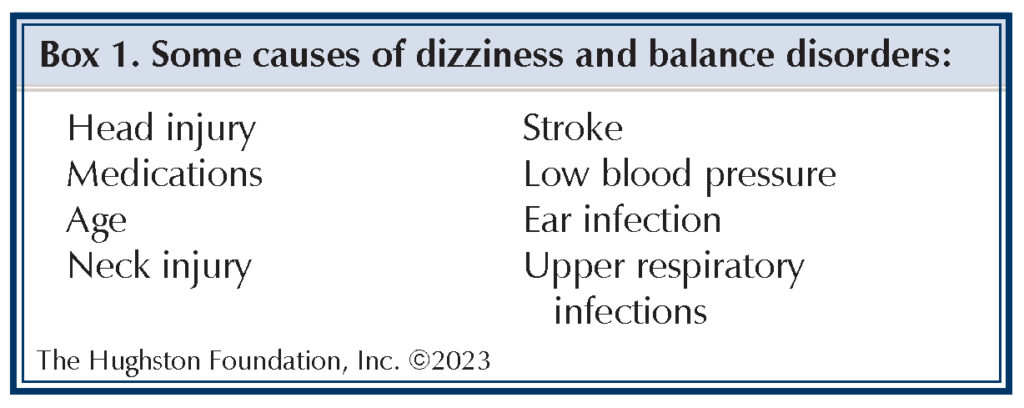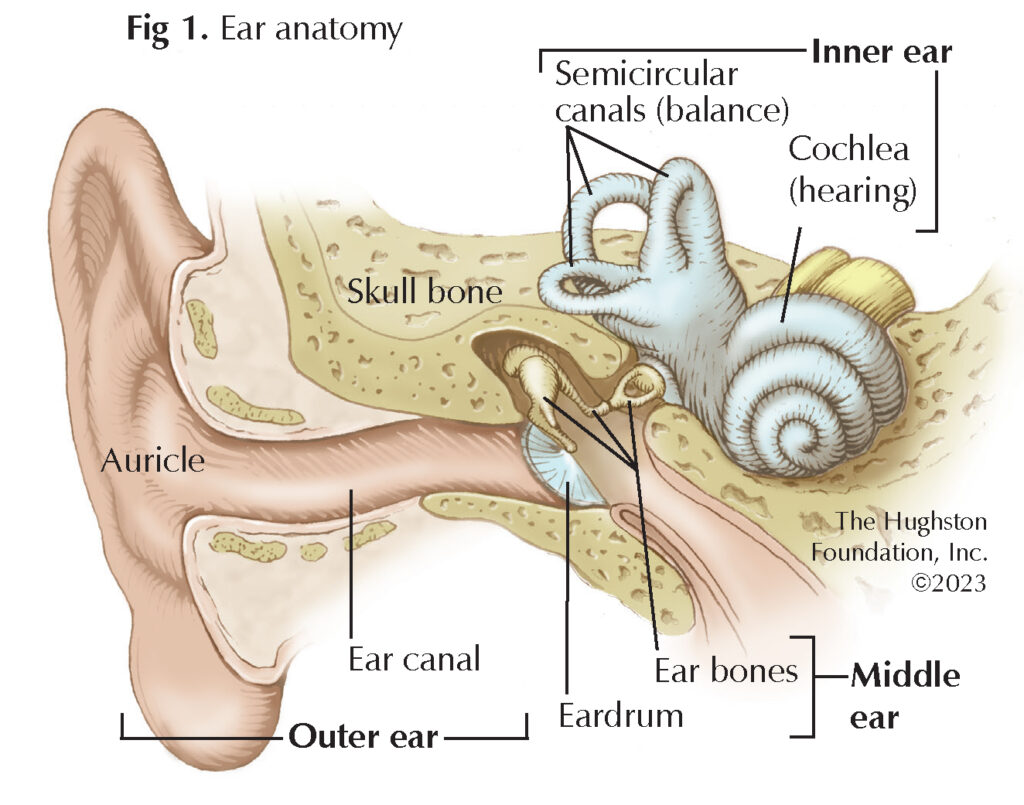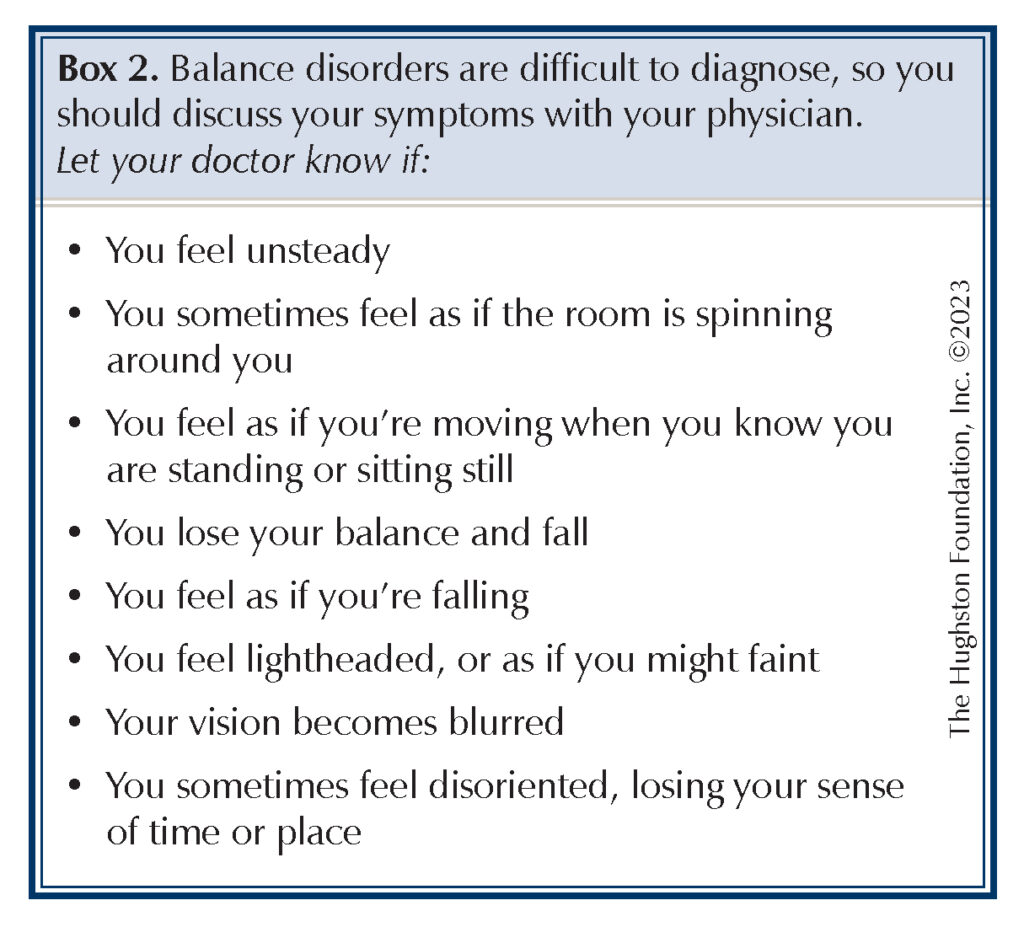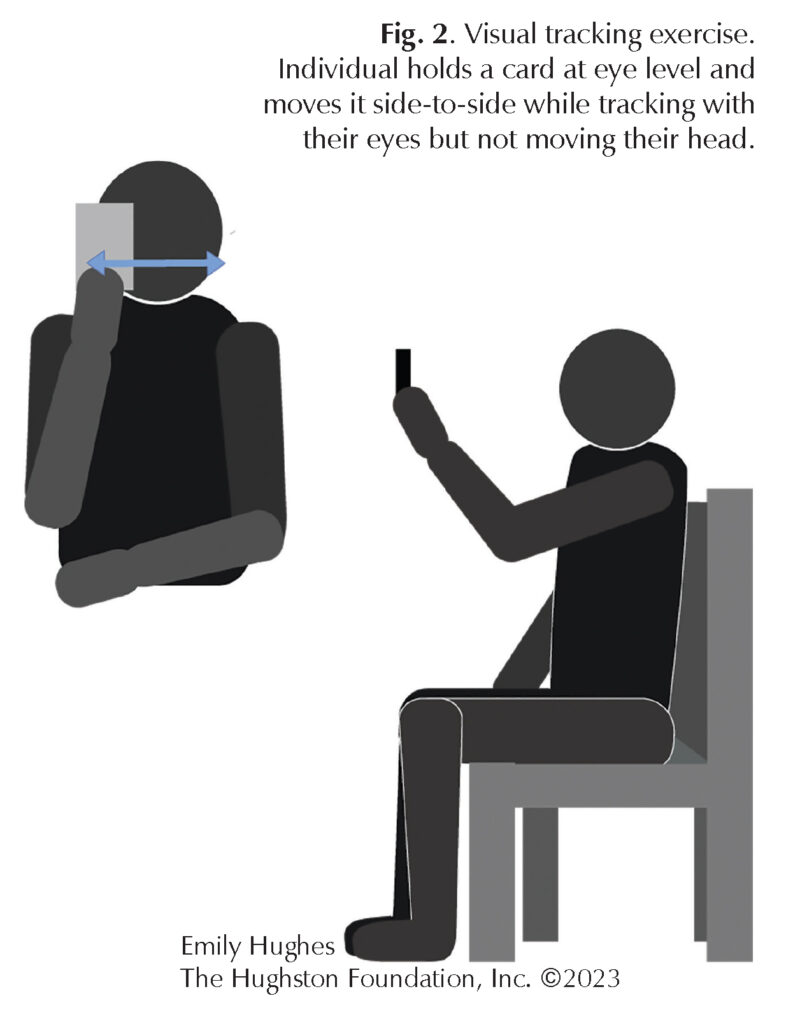
If you sometimes feel dizzy or lose your balance, your doctor may have referred you to a therapist for vestibular rehabilitation. For some, an episode of dizziness comes and goes, but for many, it is a chronic problem that doesn’t go away. If this is a persistent concern for you, vestibular rehabilitation may help (Box 1).

The vestibular system controls your balance
To keep your balance, your brain uses the signals from your eyes to see where you are, your proprioception (the sensors in your muscles and joints) to feel where you are, and your vestibular organs (the balance organs in your inner ears) to sense when your head moves. The vestibular system internally tells the brain where your head is oriented in space.
Balance is a complex system that begins in your inner ear (Fig. 1). In addition to hearing, your inner ear controls your equilibrium by serving as a sensory organ for your orientation and head movement. You have small balance organs within the inner ear that work with your visual system, which is processed by your brain to give you a sense of your body’s position. These systems help keep objects from blurring when you move your head. You also have sensory receptors in your skin, joints, and muscles that send balance-related signals to your brain. Your brain receives information from these different body systems all at once.

If changes in the inner ear occur—for example, aging, illnesses, infection, or trauma—one or several components of this system may not work properly, causing you to suffer from loss of balance. Concussion, blows to the head or ear, and whiplash are frequent causes of balance disorder and dizziness. Illness, such as ear infections, upper respiratory infections, stroke, and low blood pressure can also lead to vestibular disorders (Box 1).
Is there a cure?
For most people who have a vestibular disorder the problem is permanent because your body is limited in its ability to repair damage to the vestibular organs. The good news is that your body often compensates for a vestibular problem by retraining the part of the brain that interprets balance; therefore, treatment can help reduce the symptoms and improve your balance. Some of the recalibration can happen naturally, but for many, vestibular rehabilitation is necessary to avoid symptoms and a risk of injury.
Aging doesn’t make it easier
Older people are more likely to experience a balance disorder because as you get older, a collection of problems can affect your balance. Declining hearing and vision, cataracts, muscle weakness, or other health problems like diabetes and blood pressure can contribute to a balance disorder.
The natural aging process can affect your senses and the brain’s ability to interpret them, resulting in a slower reaction. For example, you may not respond fast enough to catch yourself if you trip on something or be able to keep your balance on uneven ground or rough terrain. A persistent sense of imbalance, or what some might call “a loss of surefootedness,” can cause a fear of falling as well.
How is this problem diagnosed?
The first step to improving your balance is to see your doctor for a physical exam and diagnosis (Box 2). Your doctor can assess whether your symptoms are from a serious problem, such as a blood or heart condition or if it is a vestibular problem. If an inner ear disorder is likely, your doctor may refer you to a specialist, such as an otolaryngologist (a doctor with expertise in the ear, nose, and throat). You may receive a hearing test, a balance test, and possibly an imaging study of your brain, such as a magnetic resonance imaging (MRI) scan.

History of vestibular rehabilitation
Although vestibular rehabilitation has only recently gained wide attention, the concept of head movement and coordinated eye exercises as a treatment for vestibular disorders is actually over 80 years old. As far back as the mid 1940’s, a British otolaryngologist name Sir Terence Edward Cawthorne observed that some patients improved or recovered sooner from dizziness after performing rapid head movements. In cooperation with a physiotherapist named Cooksey, they developed a regime of exercises to help reduce dizziness and restore balance. With some modifications, physical therapists continue to use the Cawthorne-Cooksey exercises today (Fig. 2).

How vestibular rehabilitation exercises help
Unfortunately, your body is limited in its ability to repair damage to the vestibular organs. However, some of the recalibration can happen naturally, but the recovery process can be accelerated and the degree of recovery increased by regularly practicing specific exercises. The exercises include eye, head, and body movements to stimulate your balance system. They are simple and designed so you can do them under the supervision of a therapist and at home.
What can you expect?
Vestibular rehabilitation exercises will make you feel slightly dizzy while you are doing them, which is why you need a trained therapist to help you. The dizziness you feel is normal and it is a sign that your brain needs practice making the movements to help recalibrate your balance system. If the balance exercises make you feel extremely dizzy and unwell, then your therapist may instruct you in exercises that are easier or slower.
Meeting with your therapist
A therapist who specializes in vestibular rehabilitation develops an individualized treatment plan based on your symptoms and needs. At your initial appointment, your therapist will evaluate your condition and help you set realistic goals to improve your symptoms (Box 3). Among the different types of vestibular rehabilitation exercises, your therapist will determine which is best for you.
What are the exercises?
Your exercise-based program will help you improve balance and reduce dizziness. Here are the different types of exercises that your physical therapist may use:
- Adaptation exercises improve your balance system by resetting how your brain controls your eye movements in response to your balance organs.
- Habituation exercises involve repeating movements to reduce symptoms.
- Proprioception exercises focus on detection of movement and body position, which are important cues for maintaining your balance.
- Substitution exercises help with discovering the strongest and weakest part of your balance system and relying more on the areas that can help you regain function.
- Canalith repositioning is a maneuver performed by a trained therapist who gently repositions crystals in the inner ear that have become dislodged and float within the ear canal.
Therapy includes practical solutions to improve your life
For older adults, or if you have balance problems, you will work on practical solutions to help with walking on uneven surfaces, moving unencumbered on ramps, climbing stairs, and how to move safely in the dark. Fall prevention, movement coordination, and participation in everyday activities are major areas you will work toward improving. You may have 2 to 3 sessions for an hour each week for 8 to 12 weeks. As you progress, you will be given more exercises to perform at home to help you improve.
A specialized rehabilitation therapist can give you a set of head, body, and eye exercises to help reduce dizziness and nausea. The duration of your treatment, depends on the diagnosis and clinical symptoms you experience. Some patients may only need 8 to 10 visits while other may require sessions for 3 to 4 months.
Get back on your feet
Unfortunately, many people adopt a sedentary life to avoid bringing on a dizzy spell or imbalance episode. Fear from falling can keep you inactive, resulting in decreased stamina, flexibility, and muscle strength, which also causes joint stiffness and other aches and pains. Vestibular rehabilitation can help you avoid these problems through proven treatment strategies that get you back on your feet and living your life again.
Author: Ariz S. Amaria, PT, MS, OMT-C, AIB-VR/CON | Columbus, Georgia
Last edited on November 15, 2023